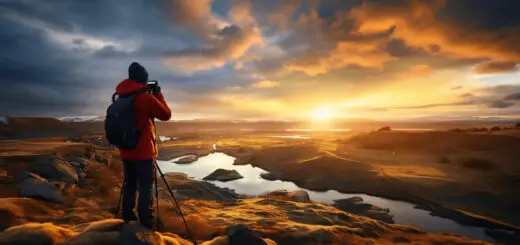Unleashing the Potential of AI Photography: Top 10 Tools and Techniques
Photography has come a long way in the past decades, and one of the game-changing developments in this field is the integration of artificial intelligence (AI) into photography tools and techniques. AI-powered technologies enable photographers to achieve stunning results, automate tedious tasks, and enhance images like never before. In this article, we will discuss the top 10 AI-driven tools and techniques that will enable photographers to take their skills to new heights and unleash the full potential of AI photography.
Table of Contents
- Top 10 AI Photography Tools and Techniques
- 1. Google Photos AI Enhancements
- 2. Adobe Photoshop AI Tools
- 3. NVIDIA GauGAN
- 4. Skylum Luminar AI
- 5. Let’s Enhance
- 6. DeepArt.io
- 7. Prisma
- 8. Pixlr X
- 9. Autodesk Impression
- 10. Snapseed by Google
- Using AI Photography Tools and Techniques: Tips & Precautions
- The Future of AI Photography
- FAQs
Top 10 AI Photography Tools and Techniques
Here’s our list of top 10 AI photography tools and techniques that will help photographers create stunning images:
1. Google Photos AI Enhancements
Google Photos offers various AI enhancements to improve your photos. With features like auto-adjustments of brightness, contrast, and color balance, Google Photos can automatically enhance the overall appearance of your images. Another AI-driven feature in Google Photos is the facial recognition, which can recognize and tag people in your photos, making it easier to organize and search your photo library.
2. Adobe Photoshop AI Tools
Adobe Photoshop is well-known for its powerful photo editing capabilities, and the integration of AI has only taken it to another level. For instance, the Select Subject tool uses AI to detect and select subjects in your images automatically, saving you time when creating complex selections. Another AI-powered feature in Photoshop is Content-Aware Fill, which uses AI to analyze the surrounding areas of a selection and fill in the selection with appropriate content, making it easier to remove or replace objects in your photos.
3. NVIDIA GauGAN
NVIDIA GauGAN is an AI-powered tool that allows users to create photorealistic images from simple sketches. It uses generative adversarial networks (GANs) to transform user-input drawings into remarkable, lifelike images. This tool demonstrates how AI can be used to generate realistic art with minimal user intervention – a major leap for creative professionals and hobbyists alike.
4. Skylum Luminar AI
Skylum Luminar AI is a photo editing software with AI-powered tools designed to streamline the editing process while delivering professional results. Some of its AI-driven features include AI Sky Replacement, which can automatically replace the sky in your photos with a more visually appealing one, and AI Portrait Enhancer, which can automatically adjust and enhance facial features in portrait photos. The AI features in Luminar AI optimize the image editing process, allowing users to achieve remarkable results in a shorter amount of time.
5. Let’s Enhance
Let’s Enhance is an online platform that utilizes AI to upscale and enhance the quality of your images. This tool automatically removes noise, artifacts, and compression from images, and it can enlarge images up to 16x while maintaining their original quality. With a wide range of filters and adjustments, Let’s Enhance can be an invaluable asset for photographers who need to improve low-resolution images.
6. DeepArt.io
DeepArt.io is a web-based service that uses AI to turn your photos into pieces of art in the style of famous artists. By utilizing advanced deep learning algorithms, DeepArt.io can analyze an original image and apply a unique artistic style characteristic of iconic art styles, such as Van Gogh, Picasso, or Monet. This tool demonstrates how AI can be used to create stunning and unique art from ordinary photographs.
7. Prisma
Prisma is an AI-driven photo editing app available for iOS and Android devices that transforms your photos into artwork using the styles of world-renowned artists. With an extensive collection of filters and editing tools, Prisma enables users to create truly unique and captivating images that stand out from the crowd. The app’s signature AI-based filters analyze your photos and apply realistic artistic effects that mimic famous works of art.
8. Pixlr X
Pixlr X is an online photo editor that uses AI to provide powerful editing tools and features in a user-friendly interface. The AI Cutout tool lets you easily separate the subject from the background, while the Refine Edge tool can detect fine details such as hair or fur, producing precise cutouts. These AI-driven features make Pixlr X a versatile photo editor suitable for both beginners and professionals.
9. Autodesk Impression
Autodesk Impression is a digital painting software that uses AI algorithms to simplify your photos into artistic illustrations. By analyzing an image’s composition and elements, Impression can automatically apply appropriate brushstrokes and color palette to create a unique and stylized representation of the original photo. This tool offers creative professionals an innovative way to produce digital artwork from photographs.
10. Snapseed by Google
Snapseed is a powerful photo editing app developed by Google for iOS and Android devices. With a range of AI-powered features, such as HDR Scape and Tune Image, Snapseed can automatically adjust exposure, contrast, and color levels, producing enhanced and eye-catching photos. The app also boasts an intuitiveinterface and a wide selection of filters and editing tools suitable for both beginners and experts.
Using AI Photography Tools and Techniques: Tips & Precautions
While AI photography tools and techniques can greatly improve your work, it is essential to use them wisely and consider certain points to achieve the best possible results:
- Maintain your artistic vision: Although AI can enhance your images and automate some tasks, remember that you are the artist. Do not rely solely on AI to make creative decisions on your behalf; use the technology as a tool, and maintain your artistic vision throughout the process.
- Understand the limitations: AI-driven tools can produce exceptional results, but they are not perfect. Recognize the limitations of the technology and be prepared to make manual adjustments if necessary to achieve the desired outcome.
- Experiment and refine: Make the most out of AI photography tools by experimenting with different settings and options to find the best combination that suits your needs. Do not hesitate to make manual adjustments or combine multiple AI tools to perfect your images.
- Respect copyright and intellectual property: When using AI-powered tools to transform or enhance images, make sure you have proper permission to use the original content or respect copyright restrictions and guidelines to avoid legal issues.
The Future of AI Photography
The integration of AI in photography has already shown immense potential and impressive results. As technology evolves and AI becomes more advanced, we can expect even better tools and techniques that will further revolutionize the field of photography. Automation, enhancement, and cohesion between software and camera hardware will continue to improve, giving photographers more freedom and flexibility to realize their artistic vision.
FAQs
- What is AI photography?
- Can I use AI to improve my photos?
- Are there any downsides to using AI in photography?
AI photography refers to the integration of artificial intelligence (AI) technologies in photography tools and techniques. These AI-driven tools and techniques help photographers achieve stunning results, automate tedious tasks, and enhance images like never before.
Yes, AI can greatly improve the quality of your photos. Various AI-powered tools and techniques can automatically enhance the appearance of images, adjust exposure and color balance, remove noise and artifacts, upscale images, and create unique artwork from ordinary photos.
While AI offers numerous advantages for photographers, it is crucial to recognize its limitations and not rely solely on technology for creative decisions. Additionally, AI-driven tools may have occasional errors or shortcomings, requiring manual adjustments to achieve optimal results. Lastly, it is essential to respect copyright and intellectual property guidelines when using AI-based photography tools.
Artificial intelligence has undoubtedly had a profound impact on the field of photography, opening up new possibilities and opportunities for both amateur and professional photographers. By exploring and mastering these tools and techniques, photographers can harness the full potential of AI and elevate their craft to new heights.


